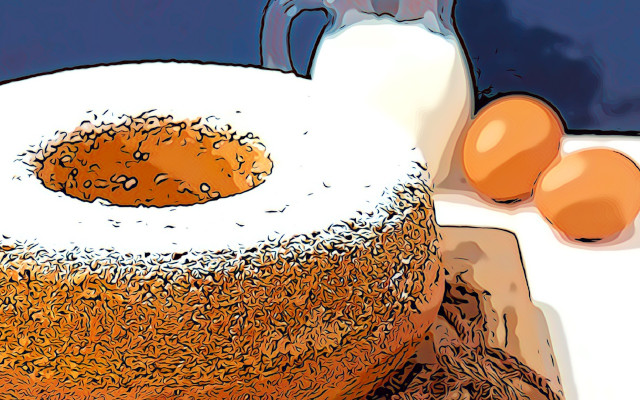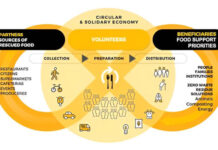Are snacks better than homemade sweets? Unione Italiana Food (UIF) promotes ultra-processed foods, denigrating simpler foods (flour, eggs, milk and yogurt, butter, sugar, jams) whose producers are represented by other industrial trade associations. Short circuit in Confindustria.
UIF’s unfortunate press release is uncritically picked up by Ansa and various newspapers, starting with La Repubblica (by John Elkann).
Fake news as usual
, in the service of big advertising investors. But snacks, are they really better? Insight.
Italian Food Union, the bizarre theorem
The bizarre theorem of Unione Italiana Food rests on a survey by Doxa, which interviewed 600 moms. And he claims to have learned that:
– few mothers would be aware of the exact amount of energy provided by a slice of homemade doughnut or pie crust. In fact, outside of obsessive cases (anorexia, orthorexia), not many people calculate the nutritional values of their recipes and weigh portions,
– many of them would exaggerate, serving their children and themselves excessive amounts of fat and sugar. And here begins the adventure of estimating the weight of slices of cake and their nutritional intake, based on the perceptions of the surveyed mothers. A superEnalotto.
The trade association-which historically represents the confectionery industries, and is funded primarily by Ferrero, Barilla, Nestlé, and Mondelez-suggests that mothers should therefore feed their little ones a factory snack, instead of the sweets they so lovingly prepare, perhaps even together. Since only the former has an average weight of 35 grams. A demented inference dodged even by the nutritionist hired by UIF, Valeria Del Balzo, who took care to point out that snacks can be consumed a couple of times a week. (1)
Ultraprocessed foods, the new coming of age
The consumption model proposed by Unione Italiana Food would have tragicomic effects when applied to various meals. In the uncertainty over the calories of a plate of tomato pasta, so much the better a serving of SaiKeBon noodles. If you lose track of the portion of stew with potatoes, it is better to go to McDonald’s. And there is not much to joke about, since this same pattern of consumption – tending to favor ultra-processed foods – is being peddled by Big Food to our kids with underhanded and illegal influencer marketing techniques, which we have already reported to the Antitrust Authority.
However, ultra-processed foods present a number of serious risks, to the health and well-being of consumers of all ages, confirmed by numerous epidemiological studies and therefore also considered by the FAO. The most recent research has even shown a correlation between the consumption of ultra-processed foods and genetic changes that result in premature aging of cells, as seen. In exact antithesis to the Mediterranean diet, which is confirmed to be an elixir of long life.
Industrial snacks vs. homemade sweets, 4 differences
The objective differences between industrial snacks and homemade sweets are at least 4:
1) food safety. The vast majority of snack labels examined qualify the related products as risky foods. In fact, many packages have phrases such as ‘may contain (traces of) nuts‘ in the margin of the ingredient list. An outlawed wording that exposes consumers with food allergies to serious dangers and has therefore been declared inadmissible by the European Commission itself, in the appropriate Guidelines on the subject,
2) quality of ingredients. Raw material costs in large-scale industries barely border on 25 percent of total costs. Which in turn represent a fraction of the final price of the snack, since both the industry and the large-scale retail trade (GDO) have profit goals. It goes without saying that there is a need for savings on raw materials, all the more so by those industries that invest large sums in advertising campaigns, prime-time TV spots and shelf promotions. This explains the presence-in the ingredient list of snacks-of milk powder, palm oil, additives (e.g., mono and diglycerides of fatty acids, instead of eggs), and chemical flavorings. Ingredients never seen in any Italian cuisine,
3) degree of industrial processing, nutritional profiles. One only has to take a look at https://it.openfoodfacts.org/ to realize how the celebrated snacks qualify as:
– Ultraprocessed foods. At level 4, the last one, on the NOVA scale,
– with nutritional profiles worthy of attention due to excessive fat and sugar contents. At level D, orange and penultimate, in the NutriScore system (scores for each product will soon be available to smartphones in Italy as well, thanks to the Yuka app),
4) price. Industrial snacks, with ingredients neither fresh nor comparable to those that every mother – or father, or whatever (!) – carefully chooses to prepare treats for their loved ones – cost up to 10 €/kg. Hard figures to spend on making a doughnut at home. The satisfaction, then, is priceless.
Industrial snacks, ingredients and nutritional profiles
The nutritional information and ingredient lists of the snacks that Unione Italiana Food recommends to substitute for Mom’s donut are telling. And the smear campaign falls back on itself, numbers in hand. Just take a look at the table profiling some of the ‘standard-bearer’ snacks, reproduced in the image illustrating the industry’s campaign.
Mors tua, vita mea?
During the lockdown , Italians rediscovered the joy of cooking at home. Sharing the ritual of preparation, adapting recipes to one’s taste, spending more time together. Thus, sales of basic ingredients increased (+28.5 percent)-the yeast gone wild, flours, dairy products, eggs (on which a blatant fraud also intervened that was hushed up by the mainstream media)-and correspondingly decreased sales of convenience foods (-2.2 percent). The Coop report on consumption in the Covid-19 era is very clear in this regard.
Market trends at the same time show the attitude of Italian consumers to recognize the greater value of organic, short supply chain, environmentally and socially friendly food products. Therefore, the Italian food industry has very good reasons to update its offerings in the direction of all-round quality, which is, by the way, the area where it can best compete in international markets as well. In a logic of sustainable development and above all supply chain, as has been done, for example, in the pasta sector, with great success.
The crass Mors tua, vita meaapproach, conversely, only harms the reputation of the Italian food system and its traditions. And it is time for someone to intervene to put an end to this disgrace, with good memory of associational codes of ethics. A little ethics in information, fact-checking instead of servility, would do the country just as much good.
Dario Dongo and Marta Strinati
Notes
(1) V.
DOXA-UIF research press release portioning homemade desserts
by Italian Food Union











